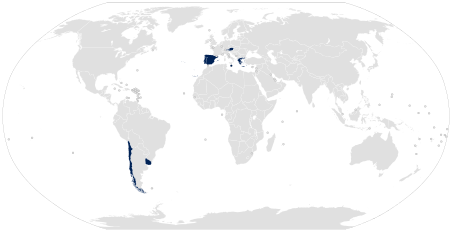| Intersex topics |
|---|
 |

Intersex medical interventions (IMI), sometimes known as intersex genital mutilations (IGM),[1] are surgical, hormonal and other medical interventions performed to modify atypical or ambiguous genitalia and other sex characteristics, primarily for the purposes of making a person's appearance more typical and to reduce the likelihood of future problems. The history of intersex surgery has been characterized by controversy due to reports that surgery can compromise sexual function and sensation, and create lifelong health issues.[2][3] The medical interventions can be for a variety of reasons, due to the enormous variety of the disorders of sex development. Some disorders, such as salt-wasting disorder, can be life-threatening if left untreated. [4]
Interventions on intersex infants and children are increasingly recognized as human rights issues. Intersex organizations, and human rights institutions increasingly question the basis and necessity of such interventions.[5][6] In 2011, Christiane Völling won the first successful case brought against a surgeon for non-consensual surgical intervention.[7] In 2015, the Council of Europe recognized, for the first time, a right for intersex persons not to undergo sex-assignment treatment[8] and Malta became the first country to prohibit involuntary or coerced modifications to sex characteristics.[9][10][11]
- ^ "Intersex Genital Mutilation – IGM: The Fourteen Days of Intersex". OII Intersex Network. 2012-02-25. Retrieved 2019-06-12.
- ^ Cite error: The named reference
who2015was invoked but never defined (see the help page). - ^ Submission 88 to the Australian Senate inquiry on the involuntary or coerced sterilisation of people with disabilities in Australia Archived 2015-09-23 at the Wayback Machine, Australasian Paediatric Endocrine Group (APEG), 27 June 2013
- ^ Mehmood, Khawar T.; Rentea, Rebecca M. (2024), "Ambiguous Genitalia and Disorders of Sexual Differentiation", StatPearls, Treasure Island (FL): StatPearls Publishing, PMID 32491367, retrieved 2024-03-12
- ^ Cite error: The named reference
swissnekwas invoked but never defined (see the help page). - ^ Cite error: The named reference
SenateOnSterilisationwas invoked but never defined (see the help page). - ^ Cite error: The named reference
raabwas invoked but never defined (see the help page). - ^ Cite error: The named reference
coewas invoked but never defined (see the help page). - ^ Cite error: The named reference
gate-maltawas invoked but never defined (see the help page). - ^ Cite error: The named reference
oiieu-maltawas invoked but never defined (see the help page). - ^ Cite error: The named reference
nyt-2015was invoked but never defined (see the help page).